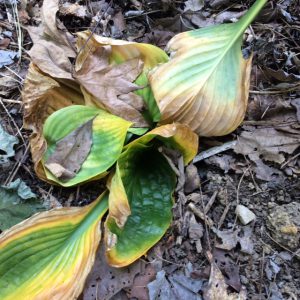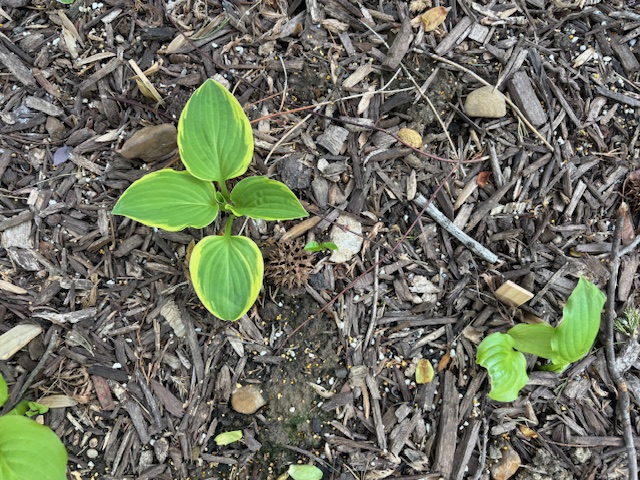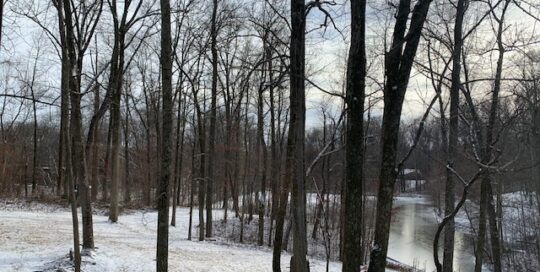Hungry Voles in the Garden
Views: 741

We haven’t had much trouble with four-legged pests. I mean, we did have the occasional small incident. But the deer usually kept to their usual paths and didn’t wander close by the gardens. Every once in a while, we’d see where they had casually browsed, but they didn’t eat much.
Once there was a beaver who tried to make a home in our little pond. He ate our neighbors’ trees and chomped down a few willow saplings, but didn’t do any real damage in our yard.
I’ve blamed the squirrels for eating tulip bulbs, but never had any proof. A few days ago, racoons took off with the suet feeder meant for the birds. I haven’t replaced it yet, hoping the little bandits will forget about it.
Of course, the moles always aggravate Wonderful Husband. He’s just a little obsessive in his continual pursuit of a pristine and perfect lawn. The moles’ hills and tunnels are taken as a personal insult. I try to remind him that moles are eating grubs, which eat grass roots, but he’s not buying it. Personally, I don’t care…like Mother always said, “If it’s green, it’s good enough.” Wonderful Husband isn’t buying that, either.
So, with very little negative experience with pesky mammals, I was totally unprepared to see the new hostas I’d planted this spring disappearing. I mean really disappearing – POOF! Upon closer inspection, I discovered a small hole, about the size of a quarter, near where the hostas had been.
It’s voles. Something I’d only read about, but naively thought that (1) they weren’t around here or (2) they weren’t a problem here. DUH! Ignorance is bliss, I suppose. We’re to blame for the voles, in a way. All the mulch we’ve spread in the gardens to improve the soil is like a Beverly Hills mansion to voles – it lets them stay hidden while they search for the next expensive plant to eat.
I don’t understand why the little varmints don’t eat something else! Like, weeds for instance; or those thousands of tiny little sweet gum saplings I have to pull out. Voles could be useful members of society, but NO! They go after my darling little hostas (and I suspect they are eating my iris, too).
An internet search provided some ideas to eradicate voles. Poison them – something I will not do. Other suggestions: sprinkle moth balls around or flood their tunnels with water – can’t see either of those being very effective for very long.
Several sources suggested using predator urine to drive them away – bobcat urine to be precise. Commenters mentioned the very unpleasant smell. Some commenters swore it worked; others said the voles liked it. Someone online had asked, “How is the bobcat urine harvested?”. The reply was “Very carefully.”
Still, my expensive little hostas had to be protected, so I ordered a bottle of bobcat urine. When I read the label (yes, I really do read the labels), the instructions said it should be re-applied after every rain. It’s been raining every other day and I really didn’t look forward to applying expensive and stinky bobcat urine every day. Besides, the voles don’t mind the rain, they pretty much stay underground. I haven’t opened the bottle yet.
Next, I thought about making hosta cages – sort of like the cages scuba divers stay in when they are filming sharks. I would plant the hostas in the cage and leave a few inches of the cage out of the ground in hopes that the voles wouldn’t want to climb out of the ground to get the leaves. I bought a roll of hardware cloth with a 1/4-inch mesh opening and had the design all worked out. Wonderful Husband, always the optimistic one (NOT!), growled, “It’ll never work.” I guess I can take the hardware cloth back to the store.
Our next-door neighbor, E is a friend and fellow Master Gardener. We were chatting the other day, and I asked her about voles. This elicited a dramatic eye-roll, indicating how much trouble they are in her gardens as well. She drops two castor bean seeds (Ricinus communis) down each vole hole and swears it keeps them away (for a while, at least). I’m definitely getting some castor bean seeds.
She also says that nothing seems to bother daffodils, so she plants daffodils around all her tulips, which keeps them protected. Wow! How cool is that? An excuse to buy more daffodils!
Stay Green, Good Friends!
PS – Castor beans are toxic – take care around pets and children.
Meet Dona Bergman
Dona Bergman is a founding member, Southwest Indiana Chapter of the Indiana Native Plant & Wildlife Society, and an Advanced Master Gardener.







